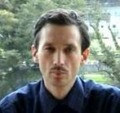Low body oxygenation is a common feature for all chronic conditions. Numerous medical studies have shown that tissue hypoxia is a norm for patients with cancer, heart disease , diabetes, and many other conditions. "All chronic pain, suffering and diseases are caused from a lack of oxygen at the cell level." Professor Arthur C Guyton, MD, The Textbook of Medical Physiology, Fifth Edition.
Dr Guyton was a Professor Emeritus, Head of the Department of Physiology and Biophysics (University of Mississippi), while his Textbook of Medical Physiology is the most widely used medical textbook of any kind and world's best-selling physiology book.
Are there any simple methods to measure body oxygen content? "Oxygen content in the organism can be found using a simple method: after exhalation, observe, how long the person can pause their breath without stress", as it was suggested in the 1960's by Dr KP Buteyko, MD, PhD, leading Soviet physiologist.
It is not easy to have good numbers for this simple breath holding time test. Why? First of all, you should have a usual exhalation just before pinching your nose and, second, the test is done only until first discomfort. When you feel that the stress starts to grow with each further second of breath holding, you should stop it and resume your usual breathing (no gasping after the test and no deep inhalations).
About one hundred years ago ordinary people (or "normal subjects", as they are called in medical studies) had about 40-50 s of oxygen in their bodies (Flack M, Some simple tests of physical efficiency, Lancet 1920; 196: p. 210-212; and Schneider EC, Observation on holding the breath, American Journal of Physiology, 1930, 94, p. 464-470). This result (40-50 s) corresponds to normal breathing parameters at rest (10-12 breathes per minute; 6 liters of air in one minute; only 500-600 ml for one inhalation) since medical norms for breathing were established about a century ago.
Modern people usually have about 20-25 s for this body oxygen test or twice less than our recent predecessors. In patients with asthma, heart disease, cancer, diabetes and many other chronic disorders the breath holding time is even shorter. What are the reasons of reduced body oxygenation in modern people? The main parameter that defines body oxygen stores is the way we breathe or our unconscious breathing pattern. Modern people breathe faster and deeper than the medical norms. You may easily notice that breathing is even heavier (faster and deeper) in the sick. This is especialy easy to spot when the sick try to exercise . It causes panting and gasping for air.
Why does overbreathing (or hyperventilation) reduce cell oxygen levels? During normal breathing our arterial blood is about 98% saturated with oxygen. Hence, overbreathing cannot increase blood oxygenation.
However, heavy breathing reduces CO2 levels in the blood and other cells and tissues. Since CO2 is the most powerful known vasodilator, reduced CO2 level causes vasoconstriction (or narrowing of blood vessels). This leads to less blood and oxygen supply to all vital organs. You can even check this effect, if you have reasonable health. Start heavy (deep and fast) breathing and do it for 2 minutes. How? Most people, if they try to breathe very heavy at rest (forceful hyperventilation), can faint in 2-3 minutes due to reduction of oxygen availability for the brain cells. Nerve cells are most vulnerable to oxygen deprivation.
Since oxygen is so fundamental for vital health, reduced body oxygen levels creates numerous symptoms and abnormalities depending on genetics and environmental factors. Most people develop chronic fatigue, desire to sit more, poor concentration, abnormal excitability of nerve cells, addictions, and various symptoms related to chronic diseases.
Furthermore, over 20 medical studies have found that modern people breathe about 12 L/min at rest, while the norm is only 6 L/min. We live in the world of heavy breathers! (Visit the Homepage of my site to see the historical bar graph with all medical references and exact numbers.) Sick people breathe even more (about 15 L/min) and that makes them even more hypoxic (lack of O2 in tissues).
Are there any medical doctors who care about low cells oxygen and heavy breathing in modern people? There is one medical therapy that has a goal to restore normal breathing parameters so that a person has over 60 s of oxygen in the body 24/7. This therapy is called the "Buteyko breathing method". The method was developed in Russia, approved by the Minister of Health of the USSR to treat asthma and heart disease , and has been used by about 200 MDs for decades.
What are the reasons of overbreathing and poor oxygenation in modern people? Buteyko MDs believe that a lack of physical exercise is the main factor. (Note that exercise is safe and beneficial if we breathe only through the nose, in and out, during exercise.) Among other abnormal lifestyle factors are: breathing through the mouth (especially during sleep), poor posture, nutritional deficiencies, overeating, pollution, overheating, stress, and many others.
Resources
- Cells Oxygen
is controlled by unconscious breathing patterns.
- Breathing Problems Solved - Homepage of NormalBreathing.com
Dr. Artour Rakhimov is a health educator in self-oxygenation, breathing and the Buteyko self-oxygenation medical therapy. He is the author of books and the educational website NormalBreathing.com devoted to natural self-oxygenation, breathing education, and breathing retraining. The website has hundreds of medical quotes, graphs, references, charts, tables, results of trials, analysis of breathing techniques, free breathing exercises, manuals, lifestyle modules and other resources for better cells oxygen levels and health. Normal Breathing defeats chronic diseases!


